Aquarid meteor shower to coincide with super moon
Earth is entering a stream of debris from Halley's Comet, source of the annual eta Aquarid meteor shower. Because the shower's radiant is located below the celestial equator, southern hemisphere observers are favored, but even northerners will be able to see at least a few flecks of Halley-dust disintegrating in the atmosphere when the shower peaks this weekend. The best time to look is during the hours before sunrise on Sunday, May 6th. Bright moonlight will cap the meteor rate at about 30 per hour.
In recent nights, NASA's all-sky meteor network has picked up a number of early eta Aquarid fireballs. This one was bright enough to shine through the glow of sunrise and clouds over Tullahoma, Tennessee, on April 29th.
In recent nights, NASA's all-sky meteor network has picked up a number of early eta Aquarid fireballs. This one was bright enough to shine through the glow of sunrise and clouds over Tullahoma, Tennessee, on April 29th.
According to analysts at NASA's Meteoroid Environment Office, this particular speck of comet dust hit the atmosphere traveling 62 km/s (139,000 mph) and disintegrated about 84 km (52 mi) above Earth's surface.
The full Moon of May 5-6, 2012, with interfere with the visibility of the eta Aquarid peak. Radar signals, however, penetrate moonlight with ease. Tune into Space Weather Radio for live echoes from eta Aquarids passing over the US Air Force Space Surveillance Radar in Texas.
New Comet C/2012 H2 (McNaught)
Magnitude: 18.6 mag
Discoverer: Robert H. McNaught (Siding Spring)
The orbital elements are published on M.P.E.C. 2012-J11.
Eta Aquarid Meteor Update
"The purple line traces the orbit of Halley's Comet, source of the eta Aquarids," says Cooke. "Blue lines are orbits of the individual fireballs determined from simultaneous observations by multiple cameras." A statistical analysis of the data shows that the fireballs hit Earth's atmosphere traveling about 66 km/s (139,000 mph) and disintegrated about 90 km (52 mi) above Earth's surface.
Forecasters expect the shower to peak this weekend; the best time to look is during the hours before sunrise on Sunday, May 6th. Because the shower's radiant is located below the celestial equator, southern hemisphere observers are favored, but even northerners should be able to see a few eta Aquarids. Super-bright moonlight will cap the meteor rate at about 30 per hour.
Daylight fireball filmed from Boise Idaho in February
April 2012 Fireball Roundup + New Footage from Brazil
I'm betting with my luck that another fireball or two will happen before April is over and my roundup will be incomplete :P We ShaLL seEeE.
Sources seen in this video:
Pieces Of Flaming Meteor Found In Sierra Foothills « CBS San Francisco
Fireball Over California Exploded with Force of 5 Kilotons
Is This a Video of a Huge Fireball Over Texas?
Recent Fireball Seen in Brazil Was Actually Re-Entering Centaur Rocket
Scientist says sound signal from exploding meteor lasted 18 minutes
A 13-meter space rock from the asteroid belt is flying past our planet today midway between Earth and the orbit of the Moon. There is no danger of a collision; at closest approach asteroid 2012 JU will be 190,000 km away.
Sources seen in this video:
Pieces Of Flaming Meteor Found In Sierra Foothills « CBS San Francisco
Fireball Over California Exploded with Force of 5 Kilotons
Is This a Video of a Huge Fireball Over Texas?
Recent Fireball Seen in Brazil Was Actually Re-Entering Centaur Rocket
Scientist says sound signal from exploding meteor lasted 18 minutes
Fireball Streaks Low and Slow Over Fargo, Seen From Several Northern States
Valley sky watchers and anyone who happened to be outside at about 10 o'clock Friday night were treated to a special sight. This is what viewers have reported on the Valley News Live Facebook page:
Kyle Wayne Erickson, "We seen it in Hope, it was at 10:02, we were all sitting on the deck and seen it, it was moving slow, looked like it was literally no more then a couple hundred feet over the trees. Had a HUGE bright colorful tail behind it, that was a once in a lifetime sighting, was the coolest thing I'd ever seen!!"
Jeremy Southwick, "Just saw a fantastic meteorite falling westward over West Fargo! Somebody go find it!"
Alex Wilkowski, "It came and went very slow for a shooting star, I didn't think many would see it. It was so low."
Some have also reporting hearing a crackling noise and seeing it break up into pieces.
What you saw Friday night was a fireball, which is a brighter than normal meteor. Reports are coming in from North Dakota, South Dakota, Manitoba, Wisconsin, & Michigan. Most shooting stars are the size of specks of dust to pebbles. Based on how bright it was reported to be, experts believe this to be the size of a softball. The larger the object, the brighter as it burns through the Earth's atmosphere. Fireballs are pretty rare events, so consider yourselves lucky!
If you were even luckier and caught a picture of the event, we'd love to share it. Please go to "Join the Conversation" on our home page. You can download your picture there.
Kyle Wayne Erickson, "We seen it in Hope, it was at 10:02, we were all sitting on the deck and seen it, it was moving slow, looked like it was literally no more then a couple hundred feet over the trees. Had a HUGE bright colorful tail behind it, that was a once in a lifetime sighting, was the coolest thing I'd ever seen!!"
Jeremy Southwick, "Just saw a fantastic meteorite falling westward over West Fargo! Somebody go find it!"
Alex Wilkowski, "It came and went very slow for a shooting star, I didn't think many would see it. It was so low."
Some have also reporting hearing a crackling noise and seeing it break up into pieces.
What you saw Friday night was a fireball, which is a brighter than normal meteor. Reports are coming in from North Dakota, South Dakota, Manitoba, Wisconsin, & Michigan. Most shooting stars are the size of specks of dust to pebbles. Based on how bright it was reported to be, experts believe this to be the size of a softball. The larger the object, the brighter as it burns through the Earth's atmosphere. Fireballs are pretty rare events, so consider yourselves lucky!
If you were even luckier and caught a picture of the event, we'd love to share it. Please go to "Join the Conversation" on our home page. You can download your picture there.
Astrophoto: Meteor Fireball Passing through the Milky Way
You Just Got a Haircut from Asteroid 2012 JU
There are two other known space rocks that will be making somewhat close passes by Earth later this month: 2010 KK37, which might be about 43 meters wide, will come within 2.3 LD (880,000 km) on May 19, and 2001 CQ36, which might be as big as 170 meters wide, will go by at 10 LD (3.8 million km) on May 30. There is no threat of any of these asteroids hitting our planet.
Asteroids passing between the Earth and Moon happens on a fairly regular basis. Last month, on April 1, a 46-meter wide asteroid named 2012 EG5 came within 230,000 km, and on March 26 of this year, two smaller asteroids shaved by at a mere 58,000 km and 154,000 km. And in January 2012 BX34 passed by at just 59,600 km from the Earth's surface.
Tunguska - Have scientists finally found fragments of the meteorite which set off the mysterious 1908 catastrophe?
At 7.17am on June 30, 1908, an explosion like a detonating hydrogen bomb erupted in the forests of Siberia - and until now, scientists have offered no conclusive explanation for the event.
Now Italian scientists claim to have found chunks of a meteorite which might have caused the blast - from seismic and magnetic scans of nearby Lake Cheko.
Lake Cheko, they claim is an impact crater for the blast - which devastated nearly 1,000 square miles of forest and was detected hundreds of miles away.
Now Italian scientists claim to have found chunks of a meteorite which might have caused the blast - from seismic and magnetic scans of nearby Lake Cheko.
Lake Cheko, they claim is an impact crater for the blast - which devastated nearly 1,000 square miles of forest and was detected hundreds of miles away.

The Tunguska event, or explosion, was an enormously powerful explosion that occurred near the Podkamennaya Tunguska River in Siberia - and was seen as far away as Britain
'This "Tunguska Event" is probably related to the impact with the Earth of a cosmic body that exploded about three to six miles above ground, releasing in the atmosphere 10-15 megatons of energy,' say the researchers.
Fragments of the impacting body have never been found, and its nature (comet or asteroid) is still a matter of debate.
'We report here results from a magnetic and seismic reflection study of a small lake, Lake Cheko, located about 8 km NW of the inferred explosion epicenter, that was proposed to be an impact crater left by a fragment of the Tunguska Cosmic Body,' say the researchers, from the University of Bologna in a paper published in Geochemistry, Geophysics, Geosystems.

© Unknown
Siberian Evenk people today: 'The sky split in two and fire appeared high and wide over the forest,' a member of the local Evenki tribe remembered at the time
Siberian Evenk people today: 'The sky split in two and fire appeared high and wide over the forest,' a member of the local Evenki tribe remembered at the time
Seismic reflection and magnetic data revealed an anomaly close to the lake center, about 30ft below the lake floor; this anomaly is compatible with the presence of a buried stony object and supports the impact crater origin for Lake Cheko.'
The explosion was so huge it was visible in Britain - and conspiracy theorists have claimed for decades it might have been caused by UFOs or other supernatural forces.
'The sky split in two and fire appeared high and wide over the forest,' a member of the local Evenki tribe remembered.
'The split in the sky grew larger, and the entire northern side was covered with fire.
Asteroid 2012 DA14 May Hit Communications Satellite in 2013
According to calculations, the asteroid will pass close enough to Earth to disrupt some orbiting satellites. Chodas, however, said that the orbiting International Space Station in low-Earth orbit is not at risk.
In spite of the fact that NASA astronomers assure that the asteroid will not hit the Earth, Steven Chesley, also of JPL, said: "We don't know exactly where it is, and that uncertainty maps through to an uncertainty in the orbit and predictions." The uncertainty, according to astronomers, means that they can't rule out that it will not hit Earth in subsequent close approaches to Earth after 2013.
NASA astronomers say there is an estimated cumulative 0.031% risk (1 in 3,230) of 2012 DA14 impacting Earth sometime between 2020 and 2082, a figure they hope to refine further as they collect more information during its close approach to Earth in February next year.
National Geographic reports that if the asteroid hits the the Earth, it will likely hit the Antarctica or the Southern Ocean because it approaches the Earth from the south. The impact of the 140,000 ton rock could release energy equivalent to a 2.4 megaton bomb, about the same as the 1908 Tunguska blast in which hundreds of square miles of forest in Siberia were leveled. According to Chodas, "If the asteroid were to strike the ocean, It could produce a tsunami," although "it probably wouldn't be big."
Comet C/2011 L4 (PANSTARRS) was found by Pan-STARRS
1 telescope on Haleakala, Maui, on the night of 2011, June 5-6. At the
moment of discovery the comet was at a distance of nearly 7.9 AU from
the Sun (discovery magnitude 19.4). According to it's orbit, around
perihelion in March 2013 the comet would be located only 0.30 AU from
the Sun and might become a bright naked eye object ( ~ magnitude 1). For
more info about the discovery of this comet, see our previous post on this blog of 2011, June 09.
We performed some follow-up measurements of comet C/2011 L4 remotely from the Siding Spring-Faulkes Telescope South on 2012, May 18.5 through a 2.0-m f/10.0 Ritchey-Chretien + CCD. The comet is now at 4.6 AU from the Sun (m2 ~ 15.6). Below you can see our follow-up image (click on it for a bigger version):
It's interesting to notice a very compact coma, this means active dust production even at 4.6 AU away from the Sun (very good news). The image processing shows an asymmetric coma, probably due to a line-of-sight effect. According to our previous experiences, the "jet-like" structures evidenced by the rotational-gradient filtering, shows very likely the striking asymmetry of the coma/tail, instead of a genuine activity due to the outgassing of the nucleus (that we are unlikely to resolve, at this time). This idea is confirmed by the appearance of the comet through the two other algorithms we applied, the azimuthal median subtraction and the 1/r theoretical coma subtraction.
Anyway, our R-filtered image (that are showing mainly the dusty coma) shows that comet Panstarrs is pretty active, even at such big distances from the Sun (this is a good sign for future expectations on a bright comet, next year).
We performed some follow-up measurements of comet C/2011 L4 remotely from the Siding Spring-Faulkes Telescope South on 2012, May 18.5 through a 2.0-m f/10.0 Ritchey-Chretien + CCD. The comet is now at 4.6 AU from the Sun (m2 ~ 15.6). Below you can see our follow-up image (click on it for a bigger version):
It's interesting to notice a very compact coma, this means active dust production even at 4.6 AU away from the Sun (very good news). The image processing shows an asymmetric coma, probably due to a line-of-sight effect. According to our previous experiences, the "jet-like" structures evidenced by the rotational-gradient filtering, shows very likely the striking asymmetry of the coma/tail, instead of a genuine activity due to the outgassing of the nucleus (that we are unlikely to resolve, at this time). This idea is confirmed by the appearance of the comet through the two other algorithms we applied, the azimuthal median subtraction and the 1/r theoretical coma subtraction.
Anyway, our R-filtered image (that are showing mainly the dusty coma) shows that comet Panstarrs is pretty active, even at such big distances from the Sun (this is a good sign for future expectations on a bright comet, next year).
Asteroid 2011 KP36 Now Appears to be a Comet
2011 KP36 was originally discovered as an asteroid by T. H. Bressi of Spacewatch survey
on 2011, May 21. Its orbit was unusual (actually a=38.6 AU, e=0.87,
i=19°), belonging to the outer Solar System. Its T3 parameter (respect
to Jupiter) is 2.64, so it entered our T3 internal list of targets.
During observations of NEO 1998 OK1 with the 0.81-m f/4 of ARI Observatory (Westfield, code H21) on Apr. 19 Tomas Vorobjov serendipitously detected also 2011 KP36 in the same FOV. Stacking all the images together (totalling 30 minutes) with its proper motion vector, Tomas Vorobjov firstly noted its cometary appearance, with a coma 6″ wide and a possible tail 9″ long in PA around 10°. Its FWHM was 4.4″ while stars nearby were 3.5″.
Here is an animation from two cropped stacks (30×30 seconds each).
After his alert, Sergio Foglia and myself observed it the following day with the 2.0-m f/10 Faulkes Telescope North at Haleakala. Conditions were nearly the best possible and stacking 4×180 seconds images its cometary activity was quite clear. FWHM was 1.3″ while stars 1.1″, but the real confirmation was the presence (visually) of a round faint coma at least 7″ wide. Here is the image:
On Apr. 21, under good seeing conditions I obtained 60×30 seconds images with the 0.38-m f/6.8 reflector from Schiaparelli Observatory: its faint coma was visible for 13″ wide even if its FWHM was only 10% larger than stars nearby (3.7″ vs 3.4″).
Another confirmation came from Tomas Vorobjov using th RCT 1.3-m f/13 from Western Kentucky University located at Kitt Peak (diffuse object with a 8″ coma and a hint of tail in p.a. 80 deg).
Discovery was announced on CBET 3109 on May 17, together with the orbital elements on MPEC 2012-K12.
During observations of NEO 1998 OK1 with the 0.81-m f/4 of ARI Observatory (Westfield, code H21) on Apr. 19 Tomas Vorobjov serendipitously detected also 2011 KP36 in the same FOV. Stacking all the images together (totalling 30 minutes) with its proper motion vector, Tomas Vorobjov firstly noted its cometary appearance, with a coma 6″ wide and a possible tail 9″ long in PA around 10°. Its FWHM was 4.4″ while stars nearby were 3.5″.
Here is an animation from two cropped stacks (30×30 seconds each).
After his alert, Sergio Foglia and myself observed it the following day with the 2.0-m f/10 Faulkes Telescope North at Haleakala. Conditions were nearly the best possible and stacking 4×180 seconds images its cometary activity was quite clear. FWHM was 1.3″ while stars 1.1″, but the real confirmation was the presence (visually) of a round faint coma at least 7″ wide. Here is the image:
On Apr. 21, under good seeing conditions I obtained 60×30 seconds images with the 0.38-m f/6.8 reflector from Schiaparelli Observatory: its faint coma was visible for 13″ wide even if its FWHM was only 10% larger than stars nearby (3.7″ vs 3.4″).
Another confirmation came from Tomas Vorobjov using th RCT 1.3-m f/13 from Western Kentucky University located at Kitt Peak (diffuse object with a 8″ coma and a hint of tail in p.a. 80 deg).
Discovery was announced on CBET 3109 on May 17, together with the orbital elements on MPEC 2012-K12.
New Comet: P/2012 K3 (GIBBS)
We performed some follow-up measurements of this object, while it was still on the neocp. Stacking of eight R-filtered exposures, 60-sec each, obtained remotely, from the Siding Spring-Faulkes Telescope South on 2012, May 23.5, through a 2.0-m f/10.0 Ritchey-Chretien + CCD, shows that this object is a comet: coma 5" in diameter and a tail nearly 5" long in PA 250 deg.
Our confirmation image:
M.P.E.C. 2012-K50 assignes the following preliminary elliptical orbitalelements to comet P/2012 K3: T 2012 Sept. 3.56; e= 0.37; Peri. = 158.59; q = 2.16 AU; Incl.= 12.76
Recovery of Comet P/2005 N3 (LARSON)
Cbet Circular No. 3123, issued on 2012, May 25, announces the recovery of comet P/2005 N3 (LARSON) = 2012 K4 (Larson) by our team; this comet was discovered on 2005, July 5.38 by S. Larson on CCD images taken in the course of the Mt. Lemmon Survey and it was last observed on 2005, December 02.
On 2012, May 22.6 we started an observing session to recover the periodic comet P/2005 N3. We found an object of magnitude ~20.4 located ~4 arcmin north-east of the nominal position. On May 25.6 we have been able to obtain a second night of observations.
Stacking of, respectively, seven and thirteen R-filtered exposures, 60-seconds each obtained remotely from the Haleakala-Faulkes Telescope North on 2012, May 22.6 and 25.6, through a 2.0-m f/10.0 Ritchey-Chretien + CCD, shows that comet P/2005 N3 (LARSON) has a ill-defined central condensation of R magnitude about 20.3, surrounded by a weak coma 5" in diameter, and a faint and broad tail, nearly 8" long toward the south-west.
Below you can find our recovery image of 2012, May 25.:
The indicated correction to the prediction on MPC 75290 is Delta(T) = -0.26 day. The linked orbital elements and an ephemeris by G. V. Williams appear on MPEC 2012-K54.
On 2012, May 22.6 we started an observing session to recover the periodic comet P/2005 N3. We found an object of magnitude ~20.4 located ~4 arcmin north-east of the nominal position. On May 25.6 we have been able to obtain a second night of observations.
Stacking of, respectively, seven and thirteen R-filtered exposures, 60-seconds each obtained remotely from the Haleakala-Faulkes Telescope North on 2012, May 22.6 and 25.6, through a 2.0-m f/10.0 Ritchey-Chretien + CCD, shows that comet P/2005 N3 (LARSON) has a ill-defined central condensation of R magnitude about 20.3, surrounded by a weak coma 5" in diameter, and a faint and broad tail, nearly 8" long toward the south-west.
Below you can find our recovery image of 2012, May 25.:
The indicated correction to the prediction on MPC 75290 is Delta(T) = -0.26 day. The linked orbital elements and an ephemeris by G. V. Williams appear on MPEC 2012-K54.
New Asteroid 2012 KP24 Flyby
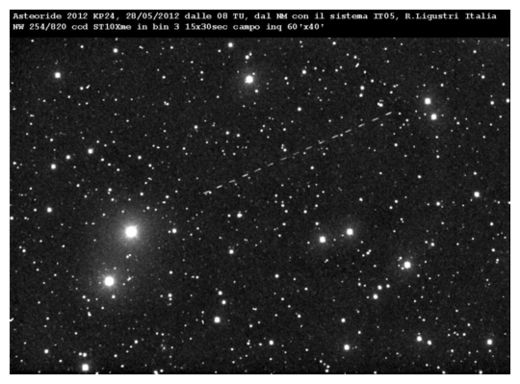
© Rolando Ligustri
I photographed the asteroid 2012 KP24 this morning when was about 350.000 km from Earth. I have used a NW 254/820 ccd ST10Xme in bin 3.
Asteroid 2012 KT42 - Close Approach
Tomorrow, May 29, 2012 at about 07:07 UT, the asteroid designated 2012 KT42
will pass only ~14,000 km (8,700 miles) or about ~0.05 lunar distance
(or 0.0001379 AU) above the Earth's surface. The asteroid was discovered
by Mt. Lemmon Survey with a 1.5-m reflector + CCD on May 28, 2012 at magnitude ~18.1.
According to its absolute magnitude (H=28.8) this asteroid has an estimated size of roughly 3-10 meters, so it is a small object. We have been able to follow-up this object soon after his discovery while it was still on the neocp, from the Siding Spring-Faulkes Telescope South on 2012, May 28.4, through a 2.0-m f/10.0 Ritchey-Chretien + CCD.
At the moment of our images from FTS, "2012 KT42" was moving at about ~3.63 "/min and its magnitude was ~17.5. At the moment of its close approach around 07UT of tomorrow, 2012 KT42 will be bright as magnitude ~12.0 and moving at ~11021"/min.
Below you can see an image (stack of 5x5-second exposures) showing the asteroid. Click on the thumbnail to see a bigger version:
Here you can see an animation showing the motion of 2012 KT42. Each frame is a 5-second exposure through the FTS 2.0-m telescope.
While there is no cause for concern, this is one of the closest approaches recorded. The table below shows the top 20 closest approaches by NEOs (Near-Earth Objects) sorted by nominal distance. The table has been computed on the NASA/Neo-JPL website. 2012 KT42 is the sixth closer approach to date. (2011 CQ1 is the closest non-impacting object in the asteroid catalog to date. The event that took 2008 TC3 into the earth's atmosphere is not included). Click on the thumbnail to see a bigger version:
On mpml mailing list, Andrew Lowe pointed out that on May 29 at about 10:10 UT, 2012 KT42 the minimum geocentric elongation from the center of the sun will be 0.1 degrees, so given the parallax there will be a transit across the sun, centered in southern Asia. If the diameter is about 5m, then the object could be only about 0.006" across against the solar disk. Aldo Vitagliano provided this map of the transit (computed by his software Solex). Click on the thumbnail to see a bigger version:
According to its absolute magnitude (H=28.8) this asteroid has an estimated size of roughly 3-10 meters, so it is a small object. We have been able to follow-up this object soon after his discovery while it was still on the neocp, from the Siding Spring-Faulkes Telescope South on 2012, May 28.4, through a 2.0-m f/10.0 Ritchey-Chretien + CCD.
At the moment of our images from FTS, "2012 KT42" was moving at about ~3.63 "/min and its magnitude was ~17.5. At the moment of its close approach around 07UT of tomorrow, 2012 KT42 will be bright as magnitude ~12.0 and moving at ~11021"/min.
Below you can see an image (stack of 5x5-second exposures) showing the asteroid. Click on the thumbnail to see a bigger version:
Here you can see an animation showing the motion of 2012 KT42. Each frame is a 5-second exposure through the FTS 2.0-m telescope.
While there is no cause for concern, this is one of the closest approaches recorded. The table below shows the top 20 closest approaches by NEOs (Near-Earth Objects) sorted by nominal distance. The table has been computed on the NASA/Neo-JPL website. 2012 KT42 is the sixth closer approach to date. (2011 CQ1 is the closest non-impacting object in the asteroid catalog to date. The event that took 2008 TC3 into the earth's atmosphere is not included). Click on the thumbnail to see a bigger version:
On mpml mailing list, Andrew Lowe pointed out that on May 29 at about 10:10 UT, 2012 KT42 the minimum geocentric elongation from the center of the sun will be 0.1 degrees, so given the parallax there will be a transit across the sun, centered in southern Asia. If the diameter is about 5m, then the object could be only about 0.006" across against the solar disk. Aldo Vitagliano provided this map of the transit (computed by his software Solex). Click on the thumbnail to see a bigger version:
We performed some follow-up measurements of this object, while it was still on the neocp. Stacking of 8 R-filtered exposures, 120-sec each, obtained remotely, from the ITelescope network (near Mayhill, NM) on 2012, May 27.4, with a 0.43-m f/6.8 astrograph + CCD,shows that this object is a comet coma 10" in diameter and a tail nearly 20" long in PA 210 deg.
Our confirmation image (click on the image for a bigger version):
M.P.E.C. 2012-K69 assigns the following preliminary parabolic orbital elements to comet C/2012 K5: T 2012 Nov. 29.04; e= 1.0; Peri. = 138.80; q = 1.15 AU; Incl.= 92.84
Jupiter, 2 of its moons and a sun-grazing Comet
Here's a neat video posted by SungrazerComets (the Twitter identity of the U.S. Naval Research Laboratory's Sungrazing Comets website) this morning. It's an animation of images taken by the Solar and Heliospheric Observatory (SOHO) on May 13 and 14, when Jupiter was passing through solar conjunction. It's pretty spiffy that SOHO can spot two of Jupiter's moons. As icing on the cake, the video also captures a sungrazing comet and a coronal mass ejection.
Meteor Shower Timelapse Seen from the Space Station
Just as the Lyrid Meteor Shower was peaking on April 21, 2012, astronaut Don Pettit captured this incredible timelapse sequence from the International Space Station. Of course you can see the familiar view of cities sweeping beneath the station as it orbits the Earth, but if you watch carefully, you can see the bright flashes of meteors burning up in the Earth's atmosphere. The timelapse was made up of 310 individual frames captured during that evening, which were then stitched together into a single video.
Fireball appears north west of Perth, Australia
We've had a couple of reports of giant orange things dropping from the sky.
You can check out some of the reports on our facebook page.
Ralph Martin is the Acting Government Astronomer at the Perth Observatory...
Listen to the audio file of this radio broadcast here.
Fireball filmed over Peru
The strange fireball was seen in the sky in Arequipa, Peru and caused great surprise for onlookers wondering what it was.
Strange enough, this isn't the first incident with fireballs or meteoroids in Peru.
In September 2007, more than 600 were reported sick after a meteoroid landed.
And in August 2011 a suspected meteor streaked across the sky over the city of Cusco in Peru.
Just click on the video to see the alleged fireball footage.
Meteorites Add to Explosion-like Sound Mystery
Nagpur: It's official now. The fire balls seen by some people in Akola district and city on Tuesday were meteorite showers spread over an area of over 200km. They travelled in eastern direction and some fell in Katol tehsil of Nagpur district. It is the first time that meteorite shower has been recorded in Vidarbha. A GSI team will be surveying the entire area where people had witnessed fire balls and explosion like sound in a day or two for more evidence.
However, the scientific reason of the sound remains unexplained. Speculations are that the sound could be the cumulative effect of different pieces of a large number of meteorites falling over a vast area or from impact of a single larger that fell in an uninhabited area like deep forest or river beds. The scientists are also not sure of any correlation, if any, between the meteorites falling and tremors of 2.1 Richter scale recorded around the same time. They said a tremor caused by impact of a huge meteorite could not be ruled out but the two events happening together could also be a coincidence.
A team of geologists led by the deputy director general (DDG) of the Geological Survey of India (GSI) Central region in city Binod Kumar has collected small meteorite pieces from different locations in and around Katol town on Wednesday evening. "We got a phone call from Katol at around 5pm on Wednesday about some stone like objects fallen at different places. I rushed to the spot with four geologists and collected the pieces. All the pieces are meteorites," said Kumar.
The DDG said many people had heard the sound. GSI team confirmed the facts in presence of the Katol tehsildar. Pieces from four different locations at Laxmi Nagar, IUDP Layout, Khutamba road and IUDP layout towards Nagpur road which were collected respectively by the town residents Nathoji Ramakrishna Charde, Govinda Muralidhar Mahajan, Javed Razzak Shaikh and Pundlik Kashiram Shivarkar. "The pieces are in our possession. We will send them to our head office at Kolkata where their exact chemical and physical analysis would be done and their age determined using radioisotope method," said Kumar.
Director of petrology department G Suresh said all the pieces were from a 'stony meteorite' as they were very rich in silicate minerals and minute quantities of iron and nickel. "The black surface is because of burning effect as they entered the earth's atmosphere," he said. The sample from Lakshmi Nagar is biggest (9.5X9X5.5cm) and weighs 673.5 gms.
Geologist S H Wankhede said, "all samples when collected were cold. They contain some nodules of iron and nickel. This piece caused an impact on the ground and created a void of 8X6X10 cm," he said. Third geologist Mohammed Shareef said that third piece recovered from agricultural field on Khutamba road fell on a galvanized iron ceiling and pierced it.
The Raman Science Centre project coordinator Shrikant Pathak clarified that meteorites sometimes caused a sound when they blast in air or big pieces strike with each other. Sound also occurred in case of a cracking of a cavity inside a meteorite piece. Big sounds occur only when big pieces hit earth. "But it is difficult to specify the reason for sound unless we find a much bigger piece of meteorite somewhere else in the region," he said.
However, the scientific reason of the sound remains unexplained. Speculations are that the sound could be the cumulative effect of different pieces of a large number of meteorites falling over a vast area or from impact of a single larger that fell in an uninhabited area like deep forest or river beds. The scientists are also not sure of any correlation, if any, between the meteorites falling and tremors of 2.1 Richter scale recorded around the same time. They said a tremor caused by impact of a huge meteorite could not be ruled out but the two events happening together could also be a coincidence.
A team of geologists led by the deputy director general (DDG) of the Geological Survey of India (GSI) Central region in city Binod Kumar has collected small meteorite pieces from different locations in and around Katol town on Wednesday evening. "We got a phone call from Katol at around 5pm on Wednesday about some stone like objects fallen at different places. I rushed to the spot with four geologists and collected the pieces. All the pieces are meteorites," said Kumar.
The DDG said many people had heard the sound. GSI team confirmed the facts in presence of the Katol tehsildar. Pieces from four different locations at Laxmi Nagar, IUDP Layout, Khutamba road and IUDP layout towards Nagpur road which were collected respectively by the town residents Nathoji Ramakrishna Charde, Govinda Muralidhar Mahajan, Javed Razzak Shaikh and Pundlik Kashiram Shivarkar. "The pieces are in our possession. We will send them to our head office at Kolkata where their exact chemical and physical analysis would be done and their age determined using radioisotope method," said Kumar.
Director of petrology department G Suresh said all the pieces were from a 'stony meteorite' as they were very rich in silicate minerals and minute quantities of iron and nickel. "The black surface is because of burning effect as they entered the earth's atmosphere," he said. The sample from Lakshmi Nagar is biggest (9.5X9X5.5cm) and weighs 673.5 gms.
Geologist S H Wankhede said, "all samples when collected were cold. They contain some nodules of iron and nickel. This piece caused an impact on the ground and created a void of 8X6X10 cm," he said. Third geologist Mohammed Shareef said that third piece recovered from agricultural field on Khutamba road fell on a galvanized iron ceiling and pierced it.
The Raman Science Centre project coordinator Shrikant Pathak clarified that meteorites sometimes caused a sound when they blast in air or big pieces strike with each other. Sound also occurred in case of a cracking of a cavity inside a meteorite piece. Big sounds occur only when big pieces hit earth. "But it is difficult to specify the reason for sound unless we find a much bigger piece of meteorite somewhere else in the region," he said.
Video of April California Daytime Fireball Surfaces
Video footage has finally surfaced of the daytime fireball that illuminated the sky over the Sierra Nevada Mountains in California back in April. NASA and the SETI Institute had asked the public to submit any amateur photos or video footage of the event, and previously a just few photos were taken of the event, even though it happened in broad daylight and created sonic booms that were heard over a wide area, back on Sunday, April 22, 2012 at 7:51 a.m. PDT. A few weeks later, Shon Bollock, who was making a time-lapse kayaking video just outside Kernville, California realized he had captured the bolide streaking through the air. This video shows the event several times, successively zooming in for a closer look. According to NASA it is the only footage of the meteor thus far.
Meteorite hunters have been successful in locating fragments of the meteor, now called the Sutter's Mill meteor since the event occurred near the area famous for where gold was discovered back in 1848, creating the California gold rush.
NASA estimated fragments could be dispersed over a 16-km (10-mile) area.
Phil Plait says the video is being studied by astronomers and meteoriticists to try to calculate the trajectory, speed, and possible orbit of the object, which is difficult with just one video, so if anyone finds they have 'accidently' taken footage of the event, contact the NASA Lunar Science Institute at the NASA Ames Research Center.
NASA used an airship to search for meteorites from this event. Noted meteorite expert Peter Jenniskens said the meteorites found so far from the fall are Carbonaceous Chondrites from the CM group of meteorites, "a rare type of primitive meteorite rich in organic compounds,"and scientists have precious few samples of this kind of material. The meteorites are very interesting to scientists from an astrobiology perspective, as they contain molecules related to how the building blocks for life on Earth may have been delivered from outer space. Scientist believe that this meteor could hold the answers to the origin of life on Earth and the universe. By studying the meteor, scientists also will learn more about the early solar system and the formation of our planets.
"This is among the most chemically primitive meteorites," said NLSI Deputy Director Greg Schmidt. "It's like asking 'how did life on Earth begin?' and then having a fossil fall right in your back yard. This is exciting stuff - who knows what's inside? The Sutter's Mill Meteorite could be the most profound sample collected in over 40 years."
Via the Bad Astronomer

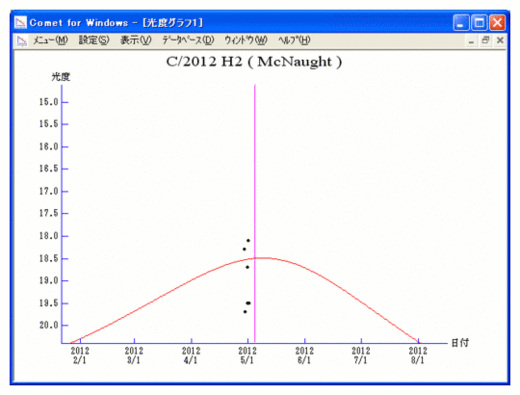
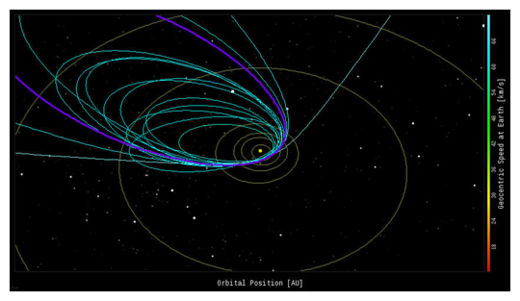
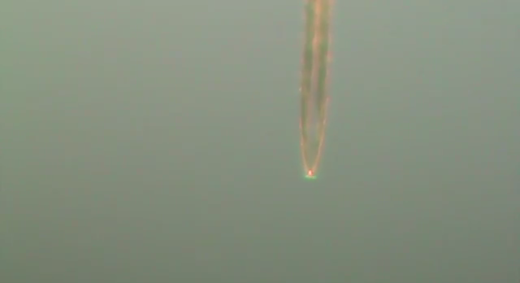
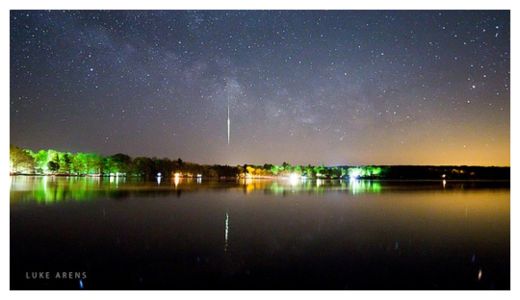
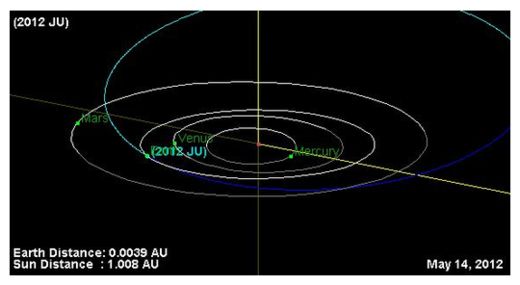
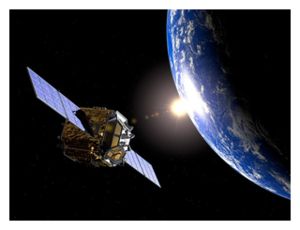
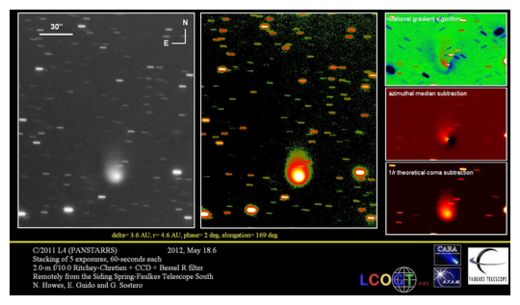
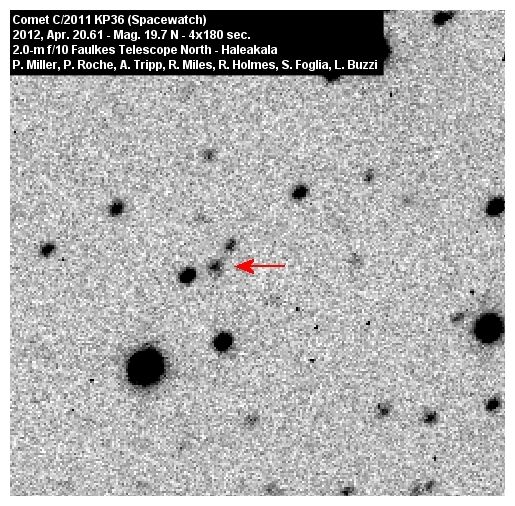
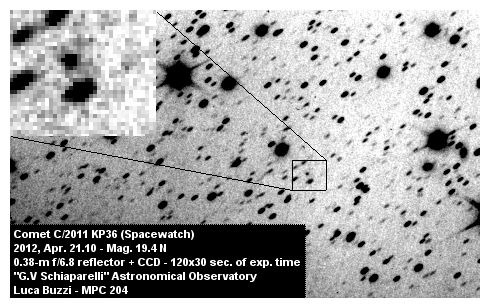
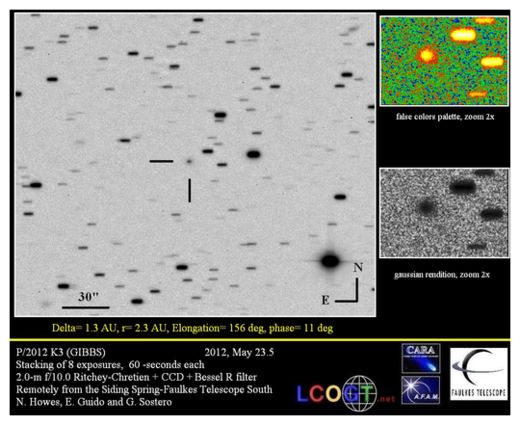

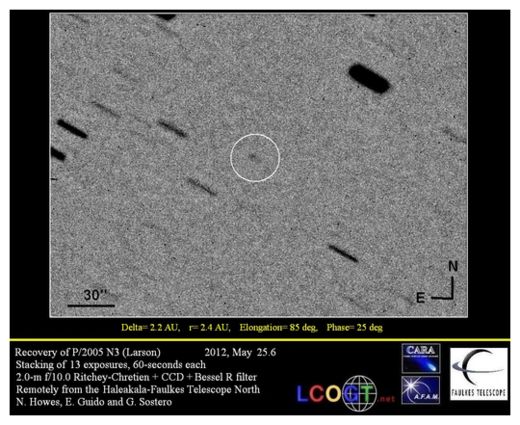

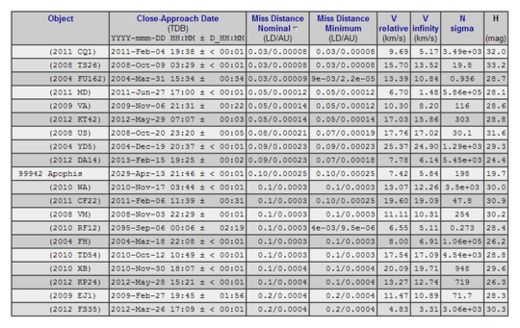
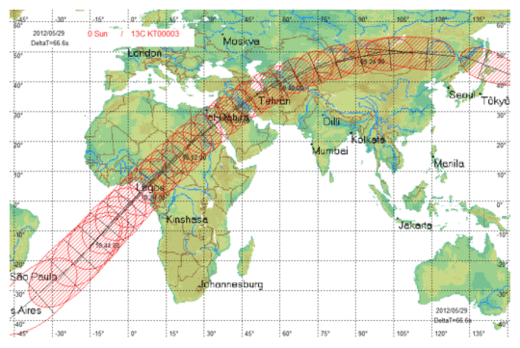
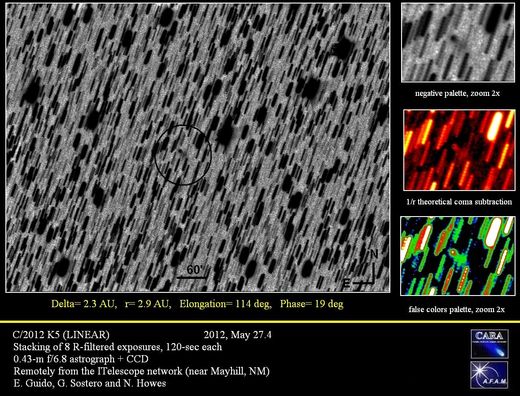
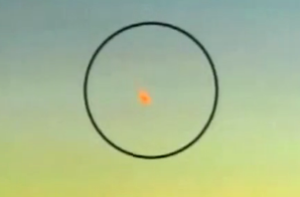
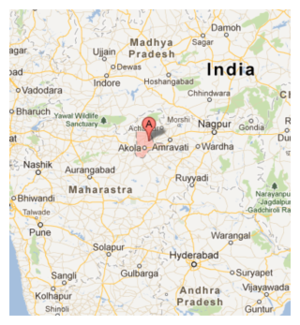
No comments:
Post a Comment